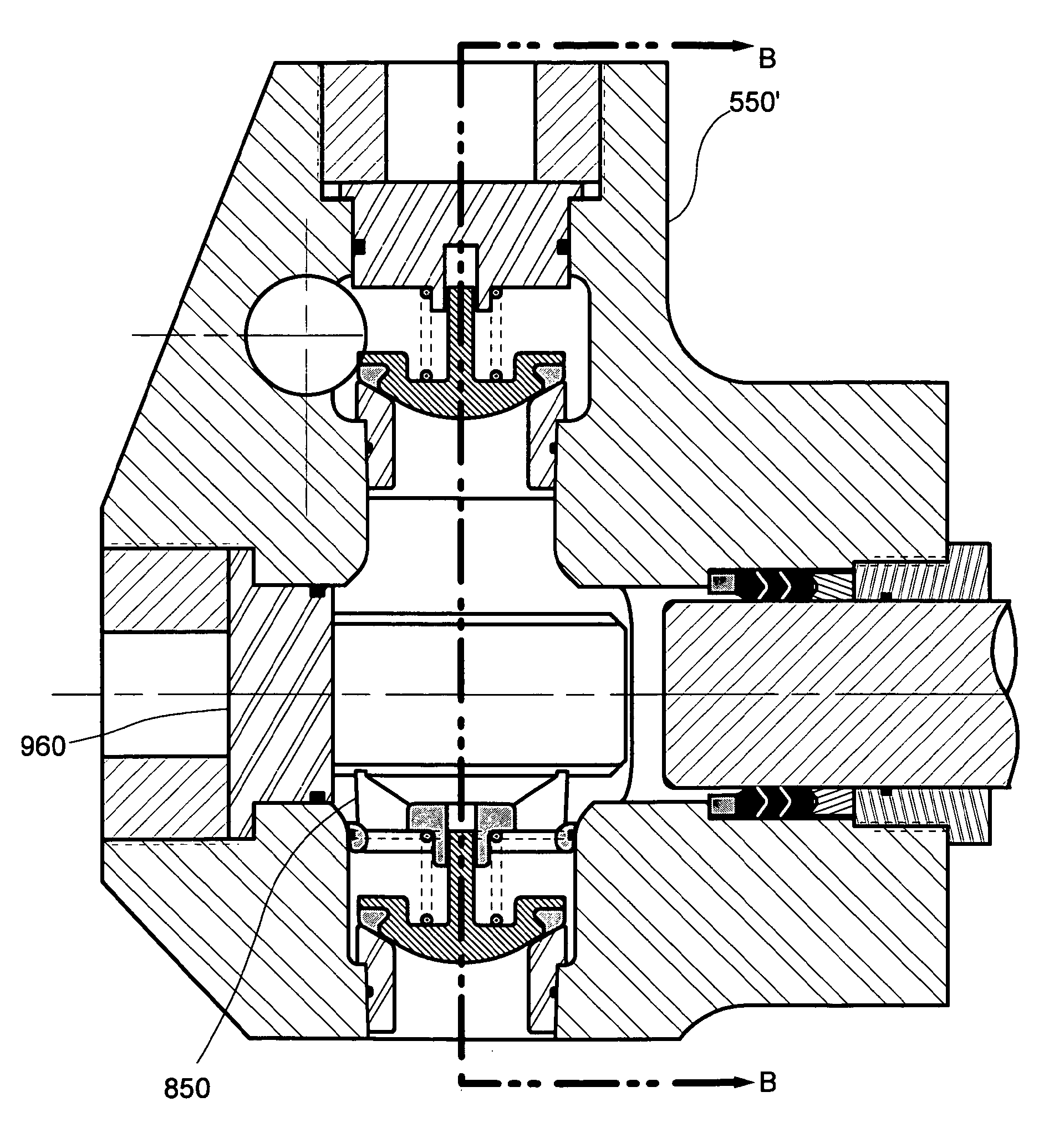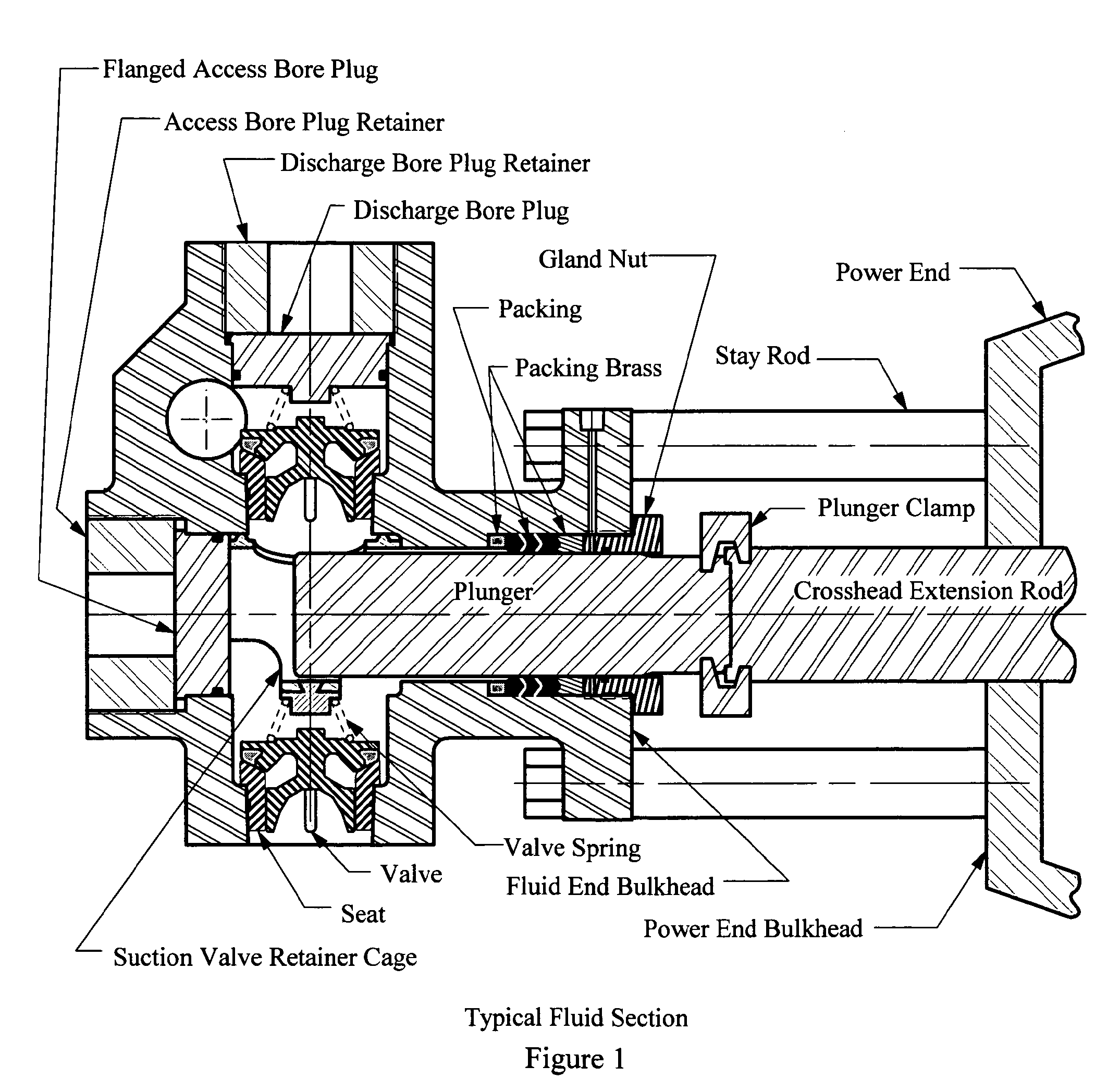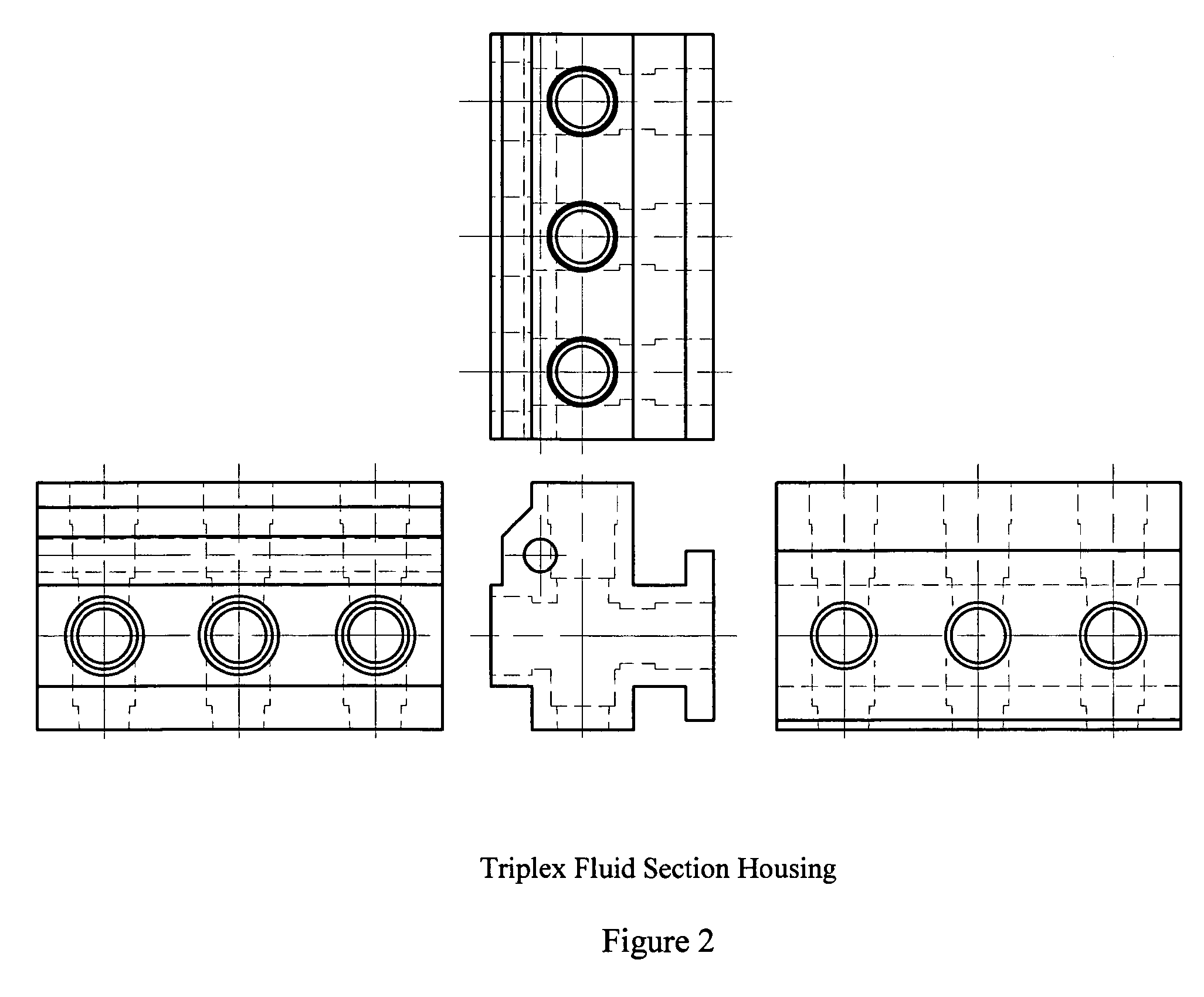Valve guide and spring retainer assemblies
a technology of valve guide and spring retainer, which is applied in the direction of machines/engines, liquid fuel engines, positive displacement liquid engines, etc., can solve the problems of y-block design, no commercial success, and individual bores in the plunger pump housing are subject to fatigue, so as to achieve the effect of convenient insertion and removal
- Summary
- Abstract
- Description
- Claims
- Application Information
AI Technical Summary
Benefits of technology
Problems solved by technology
Method used
Image
Examples
Embodiment Construction
[0081]FIG. 7A schematically illustrates cross-sections of a right-angular pump housing 550 of the present invention, including a suction bore 510 having a first centerline and comprising a first portion 512 with substantially circular cross-sections followed a second portion. The second portion of suction bore 510 comprises a cylindrical area 518 followed by an outwardly flared transition area 514. There is a suction bore shoulder 516 between first portion 512 and cylindrical area 518.
[0082]Continuing with FIG. 7A, a discharge bore 520 comprises a first portion 522 with substantially circular cross-sections, a second portion comprising an outwardly flared transition area 524, a discharge bore shoulder 526 between the first and second portions, and a second centerline, the first and second centerlines being colinear.
[0083]Continuing with FIG. 7A, a plunger bore 530 comprises a proximal packing area 532 having substantially circular cross-sections, a distal transition area 534, a plun...
PUM
 Login to View More
Login to View More Abstract
Description
Claims
Application Information
 Login to View More
Login to View More - R&D
- Intellectual Property
- Life Sciences
- Materials
- Tech Scout
- Unparalleled Data Quality
- Higher Quality Content
- 60% Fewer Hallucinations
Browse by: Latest US Patents, China's latest patents, Technical Efficacy Thesaurus, Application Domain, Technology Topic, Popular Technical Reports.
© 2025 PatSnap. All rights reserved.Legal|Privacy policy|Modern Slavery Act Transparency Statement|Sitemap|About US| Contact US: help@patsnap.com



